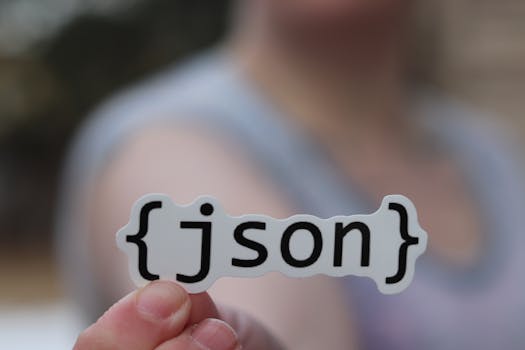JSON Encoder & Decoder
Type or past your text into the text area and click "Encode" or "Decode" to start the process of url encoding or decoding.
How to Encode and Decode JSON Data
JSON is a format for storing and transporting data. It is often used when data is sent from a server to a web page. JSON is "self-describing" because it contains all the information necessary to understand the data without any additional context. In this blog post, we will learn how to encode and decode JSON data.
What is JSON?
JSON (JavaScript Object Notation) is a lightweight data-interchange format that is easy for humans to read and write, and easy for machines to parse and generate. JSON is frequently used in Ajax Web applications, Configuration files, Data storage, and Microsoft .NET's LINQ to JSON.
How does JSON workJSON is based on a subset of the JavaScript Programming Language, Standard ECMA-262 3rd Edition - December 1999. JSON is a text format that is completely language independent but uses conventions that are familiar to programmers of the C-family of languages (C, C++, JavaScript, etc). These properties make JSON an ideal data-interchange language.
How to Encode JSON Data
What is encodingIn computer science, encoding is the process of transforming data from one form to another. The purpose of encoding is to convert data into a form that can be easily transmitted or processed. In JSON, data is encoded in name/value pairs.
How to encode JSON dataJSON data is encoded in a name/value pair format. The names are strings and the values can be strings, numbers, booleans, or null. For example, the following JSON object encodes information about a person:
{"name": "John Smith", "age": 42, "is_married": true}
To encode JSON data, you need to create a name/value pair for each piece of information you want to include in the JSON object.

Photo by RealToughCandy on Pexels
How to Decode JSON Data.
What is decodingIn computing, decoding is the process of transforming data that has been encoded into a format that is more easily processed or used. JSON decoding refers to the process of converting JSON-encoded data back into the form in which it was originally created—that is, a JavaScript object.
There are two ways to decode JSON data: with a standard function provided by JavaScript, or using a third-party library such as jQuery. The standard function for decoding JSON data is called JSON.parse(). It takes a string containing JSON-encoded data as its only argument and returns the decoded data as a JavaScript value. For example, consider the following string containing JSON-encoded data:
const jsonData = '{"name": "John", "age": 30}';
This string can be passed to the JSON.parse() function like so:
const data = JSON.parse(jsonData);
The resulting value, stored in the variable named data, will be a JavaScript object with properties name and age, set to the values "John" and 30 respectively. Note that this only works if the string contains valid JSON; if it does not, an error will be thrown.
How to decode JSON dataThere are three main ways to decode JSON data: using the browser's built-in JSON parser (JSON.parse), using a third-party library such as jQuery, or using a custom parser written specifically for your application. Each has its own advantages and disadvantages, which are outlined below.
The browser's built-in JSON parser (JSON.parse) is the simplest and most convenient way to decodeJSON data if you're just working with small amounts of data and don't need any special features such as error handling or validation. However, it has some limitations; for example, it cannot handle comments or duplicate keys in objects (it will simply ignore them). If you need these features, you'll need to use a third-party library or write your own parser .
Third-party libraries such as jQuery offer many features that are not available in the built-in parser, including support for comments and duplicate keys . However , they can be much slower than the built - in parser, especially when working with large amounts of data. In addition, they usually come with their own set of quirks and caveats that can make them difficult to work with.
Custom parsers offer the best performance and flexibility, but at the cost of increased complexity. If you decide to write your own parser, be sure to thoroughly test it before using it in production!
Conclusion
In conclusion, JSON is a great tool for data storage and communication between systems. It is easy to encode and decode JSON data, making it a popular choice for web applications.